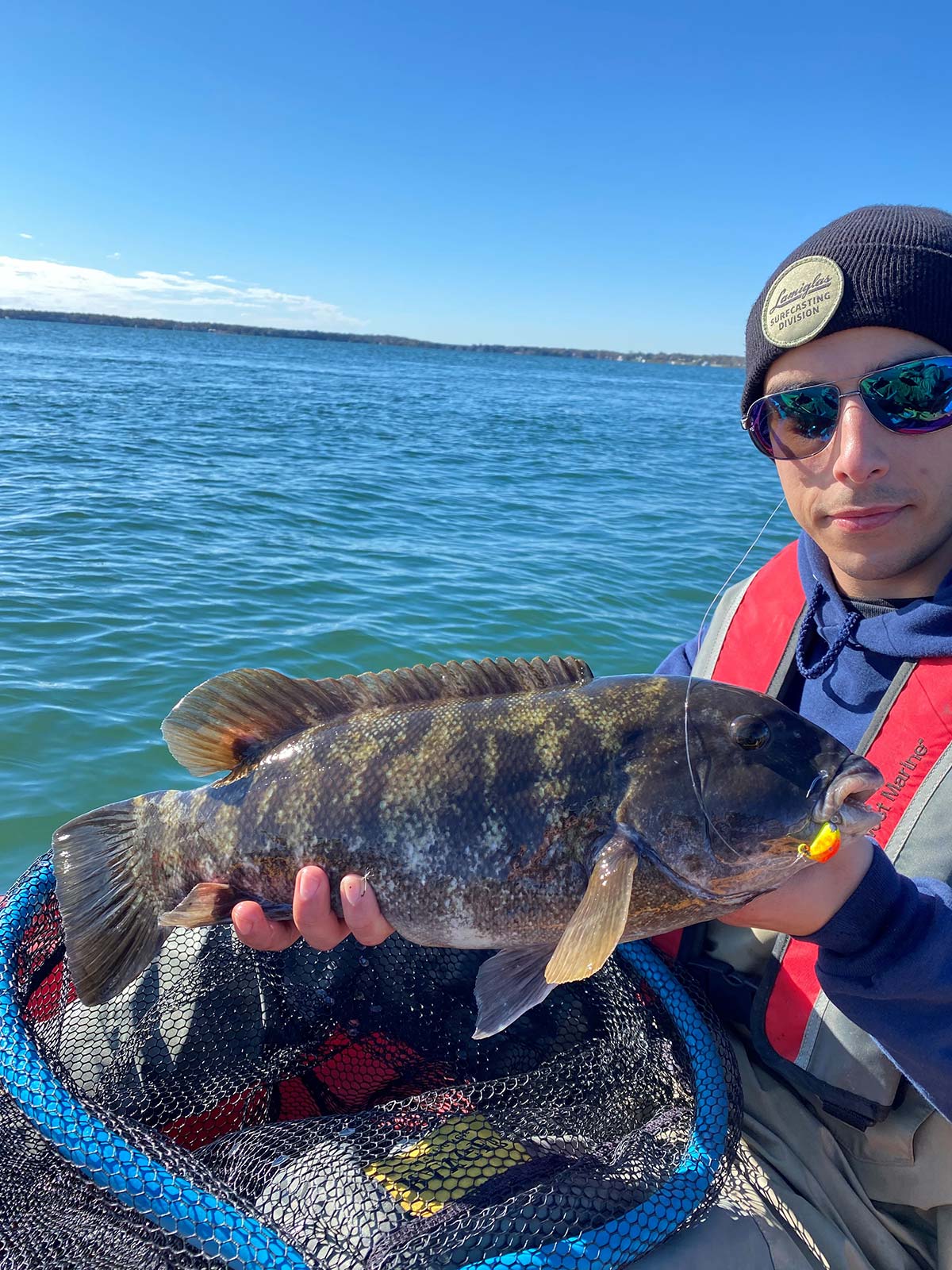
How and when to use a kayak for tautog fishing.
A kayak is a hugely useful tool for tog fishing. It facilitates the positioning of your crab into structure in a way that cannot be accomplished by boat or shore anglers. It also gives you the ability to thoroughly cover structure in a way that is not possible on a boat or from shore. Tautog fishing is often a game of inches and the kayak allows you to methodically work structure in a compartmentalized way to cover every inch of the tog’s lair. On the other hand, the effectiveness of kayak fishing for tog becomes diminished as the season progresses and as the water gets colder. For this reason, timing is the most important strategic consideration in fall kayak fishing.
During the beginning of the fall season, tautog hold shallow water. At this time, anglers usually find the greatest number of fish between 5 and 20 feet. Because of this, the beginning of the season is the best time to find tautog on nearshore structures such as jetties, bridges, and piers. These types of structures are a perfect fit for kayak anglers because the kayaker can use these structures affirmatively to keep their kayak stationary. For example, you can tie your kayak to a pier or wedge your kayak into a bridge abutment. In addition, you can use a jetty to block the current or find a still area in the lee to avoid wind exposure. In the early season, the bite is normally fast and furious. Oftentimes, you only need to move a couple of feet on these structures to find more action. As the weather gets colder, tautog will move away from these inshore locations and into open water to structure that is not visible and requires the use of charts and sonar. As the tog move deeper and deeper, the kayak becomes a less effective tool for locating and catching tautog. Anchoring is often impractical because the anchor can get stuck on the bottom causing a dangerous situation where the current pulls the kayak down which would cause the kayak to “turtle” in cold water. Hedging the current with peddles is often difficult in open water due to the wind exposure. Although you can drift and jig, this is often not as productive as staying stationary, as tog tend to hold tight to certain structure and not move too much to find food. Moreover, jigging a crab is very different than bouncing a medal spoon or bucktail off the bottom. The shape of the jig and the crab makes the presentation less aerodynamic. As such, the crab sinks at a slower rate. Moreover, keeping your jig in contact the bottom becomes a problem as it becomes difficult to manage the slack on your line or stay on the bottom resulting in difficulty setting the hook.
For the reasons stated above, it is important to focus your kayak fishing efforts on the early season when the tautog are shallow to achieve success. The fishing part is simple and all that is needed is a sturdy medium-heavy rod, 4000 class spinning or baitcasting reel, and tog jigs in a variety of weights. Jigs are your best bet for this type of fishing. Firstly, it allows for a stronger hookset since you don’t have to lift the weight off the bottom to eliminate slack before setting the hook. In addition, you will get hung-up less without dealing with swivels, weights, and extra hooks. Ease of use is also accomplished by using Asian crabs. These crabs are used whole, eliminating the hassle and mess of cutting up green crabs. Hooking them from the mouth and through the shell makes them more difficult to steal than green crabs. Most importantly, Asian crabs have also become the prevalent crab species in our local waters. In my experience, these crabs will usually be more productive than green crabs.
With terminal tackle in hand, now the angler can use the kayak as a tool for catching tautog. Never be afraid to beat the bushes to find tautog. Oftentimes, the path least travelled can be the most productive. Old pilings, abandoned piers, inshore shallow bridges, shoreline rock humps, and almost every jetty will hold tog. Some of the best tog spots will be hiding in plain sight and it can be extremely rewarding to explore. Finding a good tog spot that flies under the radar is a great gift.
For this type of fishing, your kayak will get beat up and dirty. As much as you can, wedge your kayak into places where boats can’t go. This will also cause barnacles to come loose on pilings which often stimulate tog feeding. You can also accomplish this by bringing out a garden trowel to scrape off the barnacles. If working jetties, a rope with an anchor can be a useful tool. Throw the anchor on the jetty and manage the rope to gradually move deeper. If you don’t find tog, move a few more feet parallel. For bridges and piers, you can tie yourself to pilings. If you do so, focus your efforts on slack tides. Again, it can become a problem getting free once the current starts to rip. When you start fishing, divide the structure into quadrants and thoroughly cover every inch before moving on. You will usually know right away if you are on top of fish. Again, moving only a few inches can make a big difference. Repeat this process until you find a good bite. Following these tips will help you to have a successful fall of shallow-water tog fishing.



